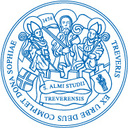Lightning talk: How the Radical Influences a Chinese Character's Phoneticity
Or: How to Read Chinese Charaters More Easily

In my Bachelor's thesis, I analyzed how the semantic indicators of a Chinese character influence its pronunciation.
After giving a short introduction to the studies of Chinese characters, I will explain my paper's topic more thoroughly, following an explanation of the methods I used to get my results.
At the end of my talk, I will present those results and give some outlook on what context these studies can be useful.
Then, I invite you to an open discussion on this matter.
With my Bachelor's thesis, I want to address not only students and teachers of the Chinese language but those who were too shy to get involved because of the - seemingly - difficult characters.
In my work, I ask whether the character that indicates the meaning (radical) in combination with the articulatory character (phonetic) influences the pronunciation of the character composed of these two components. These compound characters are commonly referred to as SP characters. They make up approx. 80% of the Chinese character set, so that an examination of these makes perfect sense.
In order to be able to answer the thesis' titling question, I compared the articulation of "phonetics in their pure form" (PiR) with the articulation of SP characters, which consist of the PiR and the radical 女 (nü, woman).
As an example: The word for horse 马 (PiR) is pronounced mă, but the word for mother 妈 is pronounced mā (SP character).
The reasoning behind the titling question is as follows: If regular changes can be found in the tonal and articulatory comparison between PiR and SP characters, these rules can be used to learn to read Chinese characters.
In my work, I used a corpus of 64 pairs of characters that I sorted in a table according to the number of strokes in the SP graphemes. This first grouping serves as a further criterion for the tonal and articulatory comparison.
Then I made a first comparison of the sinograph pairs. For this purpose, the initial and final of the respective syllables were compared while also considering the tones. This means that the couples can be assigned to four groups based on Wolfgang Schmidt's “Introduction to Chinese Writing and Drawing”.
In a final comparison, the tonal changes from PiR to SP characters are examined.
From this the following results can finally be presented: As the number of lines in an SP character increases, it is extremely likely that the tone has not changed from PiR to SP character. In connection with this, the vowels as sound carriers hardly change, but the consonants cannot be classified into any clear regularities.
Info
Tag:
21.11.2020
Anfangszeit:
18:45
Dauer:
00:30
Raum:
Clotilde Tambroni
Track:
Applied Linguistics
Sprache:
de
Links:
Dateien
- Signifika_Tablle_-_Tabellenblatt1.pdf
- How_the_Radical_Influences_a_Chinese_Character’s_Phoneticity_(1).pdf
Feedback
Uns interessiert Ihre Meinung! Wie fanden Sie diese Veranstaltung?
Gleichzeitige Events
ReferentInnen
 |
Christina Gigon |